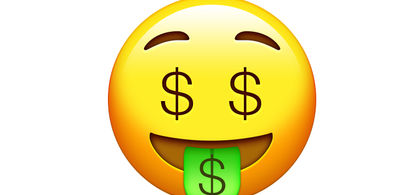- 45% of US consumers are willing to send or receive a payment using emojis.
- Gen Z (71%) are much more likely than Boomers (40%) to pay using emojis.
- But this may present a risk, as 47% of people say they have had an emoji misinterpreted or taken out of context.
Imagine a world where a misinterpreted emoji could actually cost you money. Well, we may be closer to that than you think.
Moneyzine.com has analysed data that reveals emoji payments are likely to become popular in the coming years - and that trend has the potential to create a new risk for both consumers and payment providers.
Emoji payments are taking off
According to a recent study, 45% of US consumers are willing to send or receive a payment using emojis. This differs between generations, with Gen Z (71%) and Millennials (67%) significantly more likely to use emojis to pay than Gen X (57%) or Boomers (40%). And 11% are already using emojis through payment apps.
Thus far, relatively few payment providers allow users to send money simply by using emojis. While apps like Monzo and Venmo both encourage users to use emojis to accompany payment, the only company to build a business model around emoji-based payment was Plynk - which gained traction in 2017 through a large Series A fund but ultimately went broke just one year later.
This new data suggests Plynk was ahead of its time. And given the FinTech world’s focus on user-experience, it now seems inevitable that more companies will begin to offer emoji-based payment.
The most popular things to buy using emojis are takeout meals, clothing and streaming services. Emojis not only make the payment process more fun, they take some of the awkwardness out of asking friends to send you money. In fact, 56% of people say they feel more comfortable using emojis than language.
But there are potential risks to this trend
Emojis do not have universal definitions. While 92% of people believe emojis enable them to speak across language boundaries, there is evidence to suggest emojis can also create communication barriers.
39% of people have sent an emoji they later regretted; 63% have received an emoji that didn’t match the emotion the person was trying to communicate; and 47% say they have had an emoji misinterpreted or taken out of context. This is annoying for day-to-day life. But what will it mean if emojis are further adopted as a means of payment?
The legal implications could get complicated
A mistaken purchase might not seem like a big deal. You’ll quickly be able to explain what’s happened and get a refund - right? But that is not necessarily the case. In fact, there is reason to suspect emojis could become legally binding in the future.
A Canadian judge recently ruled that a thumbs-up emoji constituted a legal signature - and fined a farmer C$82,000 for failing to fulfil the contract. Given that 44% of eCommerce sellers now charge a Returns fee, it’s plausible that accidentally sending the wrong emoji could saddle consumers with a payment you never anticipated.
These risks are relatively small. But what if emojis are misinterpreted by auditors at the payment provider? There could be large accounting problems - potentially costly ones - that come down to the interpretation of an emoji.
This data helps us imagine the future of online payments. Hopefully, it also helps us prepare and mitigate the risks emoji payments present.Jonathan Merry, personal finance expert at Moneyzine.com
Contributors
.jpg)




